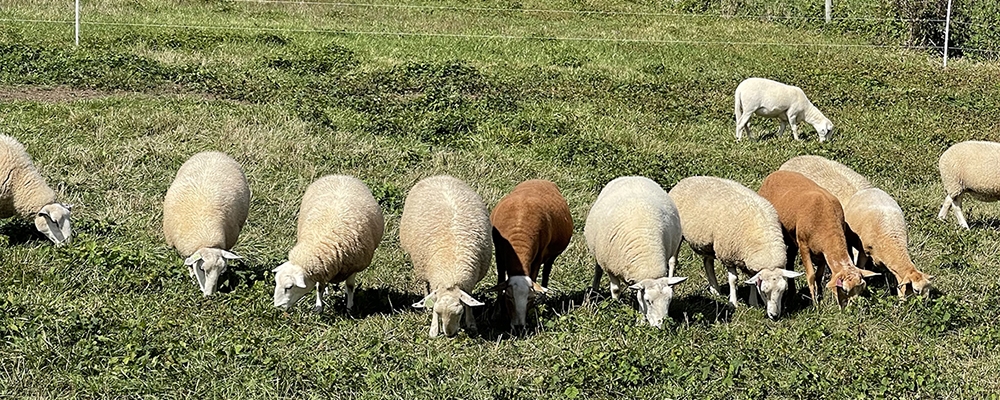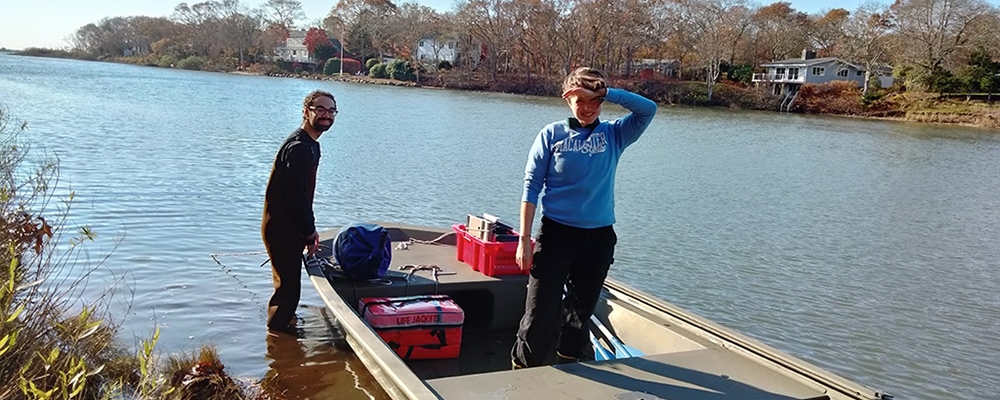SES Courses

We have revitalized the SES science curriculum and modified the structure to incorporate expertise of new faculty and better address solutions to the future’s environmental challenges. The new structure will be organized into a block/modular format that allows more student choice while retaining fundamental aspects of the program that have been highly successful over its history. Consistent with MBL’s education philosophy, the SES stresses “learning by doing.”
|
Module 1 Fundamentals of Ecosystem Science: |
Module 2 New! Coastal Watersheds OR New! Methods and Concepts in Oceanography |
Module 3 Methods in Microbial Ecology OR New! Marine Resource Use and Conservation |
Module 4 Independent Undergraduate Research |
|
Science Writing |
|||
Module 1
Fundamentals of Ecosystem Science (Zoe Cardon and Ketil Koop-Jakobsen)
For the first four weeks of the program, all students will dive into the fundamentals of ecosystem science using local terrestrial and aquatic ecosystems on Cape Cod as model systems. This course will provide students with intensive training in ecosystem science in various field sites including grasslands, coastal forests, freshwater ponds, and estuaries, where students will learn methods and tools to measure and quantify primary and secondary production, decomposition, and nutrient cycling within the soils, sediments, and water. Students will use field and laboratory instruments to measure light, photosynthesis, gas and nutrient fluxes from living organisms and their environment and learn how to scale up processes to the ecosystem level.
Terrestrial fieldwork is conducted in grassland, forest and suburban habitats in Peterson Farm and Beebe Woods, Falmouth and the Crane Wildlife Management Area, Mashpee. These sites are conservation areas and chosen to allow a comparison of ecosystems processes, such as primary production and nitrogen mineralization, and properties such as standing stock, plant diversity and soil carbon and nitrogen content across the disturbance gradient.

There are four local sites used for aquatic fieldwork that offer an array of conditions to be studied: West Falmouth Harbor, Childs River/Waquoit Bay, John’s Pond, and Sider’s Pond.
West Falmouth Harbor: Small salt water embayment adjacent to Buzzards Bay on the west coast of Falmouth that is impacted by the plume from the Falmouth Wastewater Treatment Plant.
Child’s River/Waquoit Bay: This is a system of small estuaries on the outwash plain along the south coast of Falmouth. This site has been eutrophied by groundwater contaminated with nitrogen from septic systems in densely settled sections of the watershed, resulting in the disappearance of eel grass in this system.
John’s Pond: A freshwater kettle hole pond with a deep basin (~ 20 meters) that is seasonally stratified.
Sider’s Pond: A salt- stratified meromictic pond about 15 meters deep that displays strong vertical gradients in oxygen, sulfate, nitrate and ammonia, which illustrates anaerobic processes in marine and brackish water systems.

Modules 2 and 3
Following the 4 week core course students will choose in modules 2 and 3 between two different course offerings. Each module consists of one intensive course taught exclusively for three weeks. In module 2 students can choose between Coastal Watersheds and Methods and Concepts in Oceanography and in module 3 they can choose between Methods in Microbial Ecology and Marine Resource Use and Conservation. Mathematical modeling of Ecological Systems may be offered in the third module as well.
Coastal Watersheds (Jim McClelland)
Estuarine ecosystems are strongly influenced by terrestrial inputs, and changes in the quantity and quality of water flowing from land into these ecosystems are altering their function. This course examines how human activities on land alter the flow of water and water-borne materials from coastal watersheds to adjoining estuaries. Field work focusing on local watershed-estuary systems will explore how changes in land use have increased nutrient inputs to local estuaries, and consequently, how the estuarine ecosystems have changed. Activities include sampling of groundwater and surface water, laboratory analyses of nutrient content, and estimation of nutrient input rates (using field-based calculations and modeling techniques) to different estuaries. The course fosters fundamental understanding of principles in watershed hydrology and biogeochemistry and advanced exploration of coupling between terrestrial and aquatic systems.
Methods and Concepts in Oceanography (Rut Pedrosa Pamies and Kristin Gribble)
In this course, students will explore dynamic systems that shape our oceans and cutting-edge techniques used to study them. The course combines lectures, hands-on laboratory work, and field work to offer a comprehensive introduction to biological oceanography, physical oceanography, biogeochemistry, marine ecology, and the ever-changing nature of our oceans. Students will gain practical experience in key laboratory, field, and ship-board oceanographic techniques, including microscopy, molecular methods like PCR and sequencing, ocean sampling methods such as water column profiling using CTD casts and Niskin bottle grabs, and sediment grabs. Additionally, they will delve into the physical processes that drive ocean circulation, major oceanographic features, the role of primary and secondary production and the microbial loop in marine ecosystems, and the impact of climate change and human activities on ocean health.
Microbial Methods in Ecology (Joe Vallino)
This course reviews the scientific rationale behind various methods suitable for determining the role of microbes in ecosystems through a series of hands-on laboratories. In the laboratory, students will work with the latest techniques to measure microbial biomass, activity, extracellular enzymes, biogeochemistry and species diversity. These include epifluorescence microscopy, radio isotopic tracers for bacterial production, fluorescent substrates, hydrogen sulfide and methane production, and molecular probes for classes of bacteria.
Marine resource use and conservation (Loretta Roberson and Mirta Teichberg)
Students will learn about coastal and marine resource use and examine their threats to biodiversity and conservation exploring examples in the Cape Cod region and discussing global case studies. The course will review various methods and uses of aquaculture and mariculture for promoting the blue economy, their potential consequences, but also potential to mitigate climate change and nutrient pollution. We will also review the role of restoration in promoting ecosystem recovery and conservation. Field trips will include visits to local shellfish and finfish hatcheries, ongoing restoration projects, and conservation organizations.
Module 4
Independent Research Projects
Students will choose an independent project selected from a range of topics within Ecosystem Science aligned around faculty expertise. Starting in the second module, students will participate in a weekly seminar/project period where they will review and discuss project ideas within the overarching research topics. After selecting individual projects, students will then develop their ideas into a proposal to be presented by the beginning of the final module of the program. During projects time, students will work independently, but also complimentary with other students in the overarching topics, mentored by MBL scientists. At the end of the project time, students will report on their work through an oral presentation of results at the student symposium and a written paper.
Science Writing Seminar
SES students all take part in a one credit seminar that introduces the art of science writing. This course is taught by Claudia Geib, freelance science journalist and producer of the podcast Gastropod, with the help of guest experts across the science writing industry. The goal is to help students understand how scientific work can be made more accessible to the public, and to produce writing that engages readers as well as educates them. Students will interview pre-eminent scientists, learn to write short news stories, and work to produce a long-form feature of their choice as a final project. Along the way, they'll learn from podcast producers, documentary filmmakers, investigative journalists and institutional science writers who can share their experience and expertise in this diverse field. With this and other programs at the Marine Biological Laboratory, we hope to begin training a new generation of writers who can communicate critical scientific and environmental issues with the public.
Prerequisites
Because of the diversity of curricula at the schools participating in the Environmental Science Consortium, we are providing a description of the knowledge we hope students will have, rather than specific course requirements. We recommend courses in general biology, chemistry and calculus or statistics.